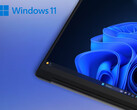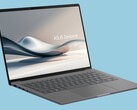When Qualcomm first announced the Snapdragon X ARM APUs, excitement was high since it appeared that Windows machines were finally going to be on par with MacBooks in energy efficiency. But, as we now know, the Snapdragon X SoCs didn’t prove to be the savior many thought they would be.
For starters, Qualcomm’s APUs don’t provide any notable performance advantage over the current crop of Intel and AMD chips. Moreover, while the Snapdragon X Elite and X Plus chips are efficient, many machines based on Intel Lunar Lake/AMD Strix Point APUs are either on par or not far behind in terms of battery life.
Then there is the issue of app compatibility with the Snapdragon X SoCs and the lack of cost-effective Snapdragon X Windows laptops. All this combined compelled us to declare that “there are no real arguments for a Windows laptop with an ARM processor” in our review of the Microsoft Surface Laptop 7.
However, despite these obvious shortcomings, Qualcomm appears to have clawed its way to a healthy market share in December 2024.
Snapdragon X Windows PCs were popular in December 2024
We reported in late November 2024 that the Snapdragon X-based Windows laptops only accounted for a measly 0.8% market share in Q3 2024. The report was quite damning as it showed that Qualcomm had a big hill to climb before the company could achieve its goal of 30-50% market share by 2029.
Things are now looking up for the company. Qualcomm CEO Cristiano Amon has claimed that “Snapdragon X Series had more than 10% share of the greater than $800 Windows laptops in U.S. retail.” If the figures are accurate, the December 2024 shipment numbers are a far cry from earlier reports.
However, keen-eyed readers might have noticed that Cristiano Amon is only claiming a >10% share for laptops that:
- Cost more than $800
- Sold in December in the U.S. alone
As such, Qualcomm is making no claims regarding the global shipments and laptops that cost less than $800. This makes sense since there is a lack of cost-effective Snapdragon X-based Windows machines on the market. Nonetheless, this is welcome news for Qualcomm and Snapdragon fans who were hoping for Windows ARM laptops to do better.
That said, Qualcomm still has a lot of work to put in before Snapdragon laptops can stand on equal footing with Intel and AMD-based machines across the entire Windows ecosystem.
Key issues plaguing Snapdragon X Windows laptops
One of the biggest issues currently facing laptops powered by the Snapdragon X Elite and X Plus SoCs is the iffy app compatibility. This has been an issue since the first time Microsoft tried to pitch ARM-based Windows laptops as a viable alternative. While the problem has been greatly reduced, Microsoft and Qualcomm still have a fair bit of work to do here.
Furthermore, the lack of any budget Snapdragon laptops will undoubtedly hamper the company’s ability to reach a wider audience. This is even truer on the global stage and in markets where consumer spending is considerably lower than in the US. Qualcomm is looking to do just that with the 8-core Snapdragon X SoC.
Finally, Qualcomm needs to offer even better performance/energy to truly outshine the current crop of x86 rivals.
Whatever the case ends up being, it is refreshing to see Qualcomm gaining some foothold in the market. More and, more importantly, intense competition is always a win for the end consumer.
Source(s)
Windows Central, Teaser image: Qualcomm, Asus, edited

















